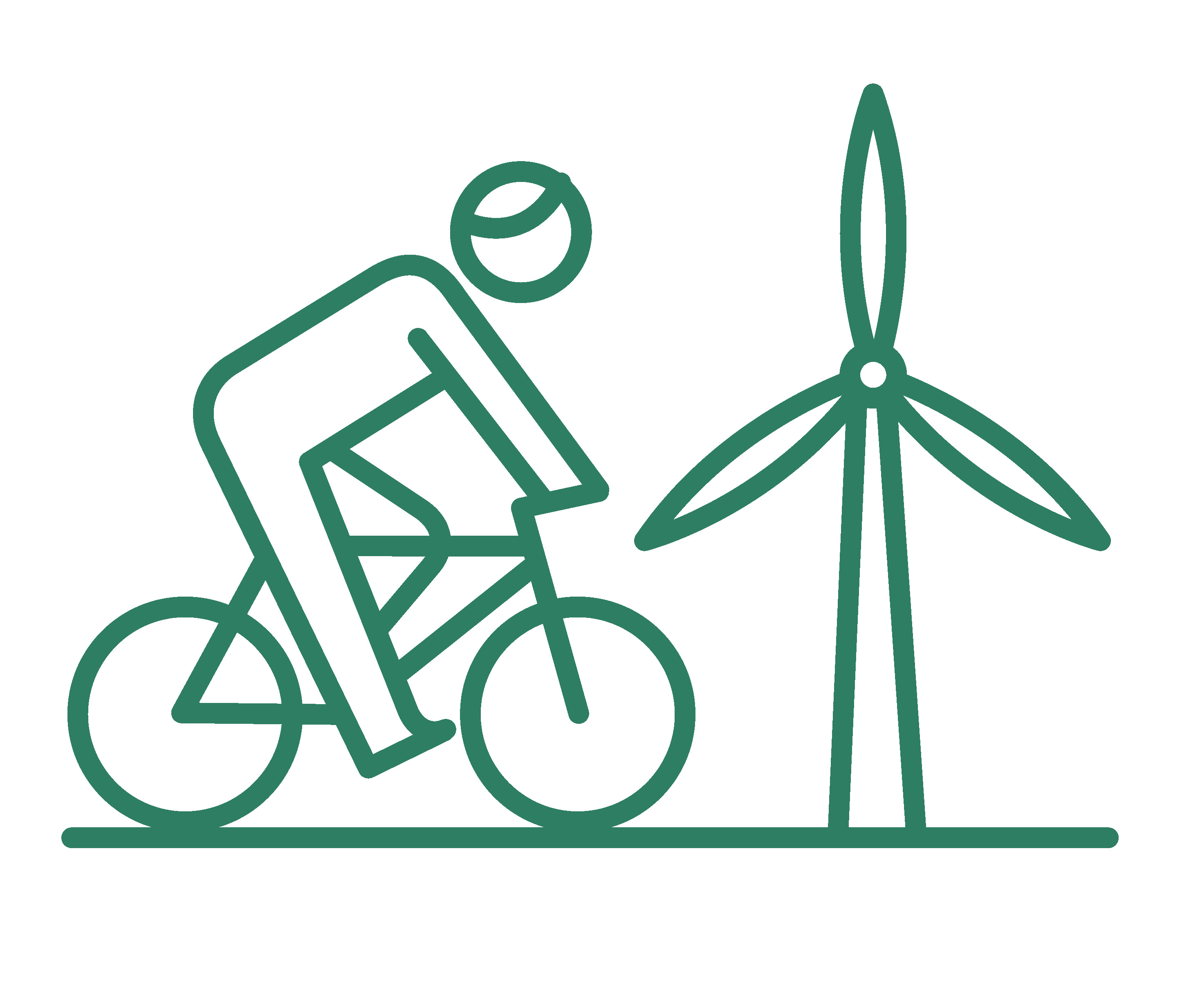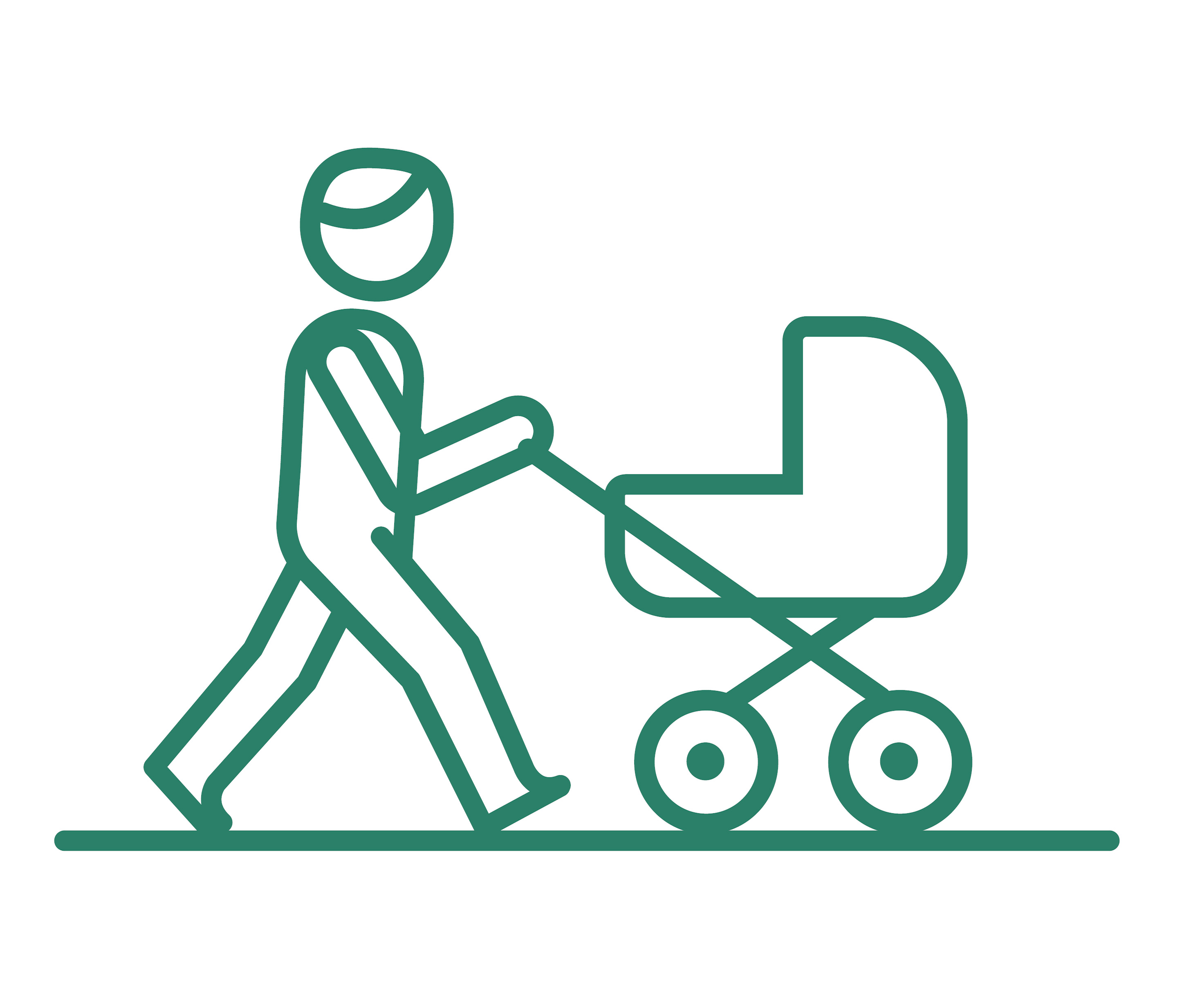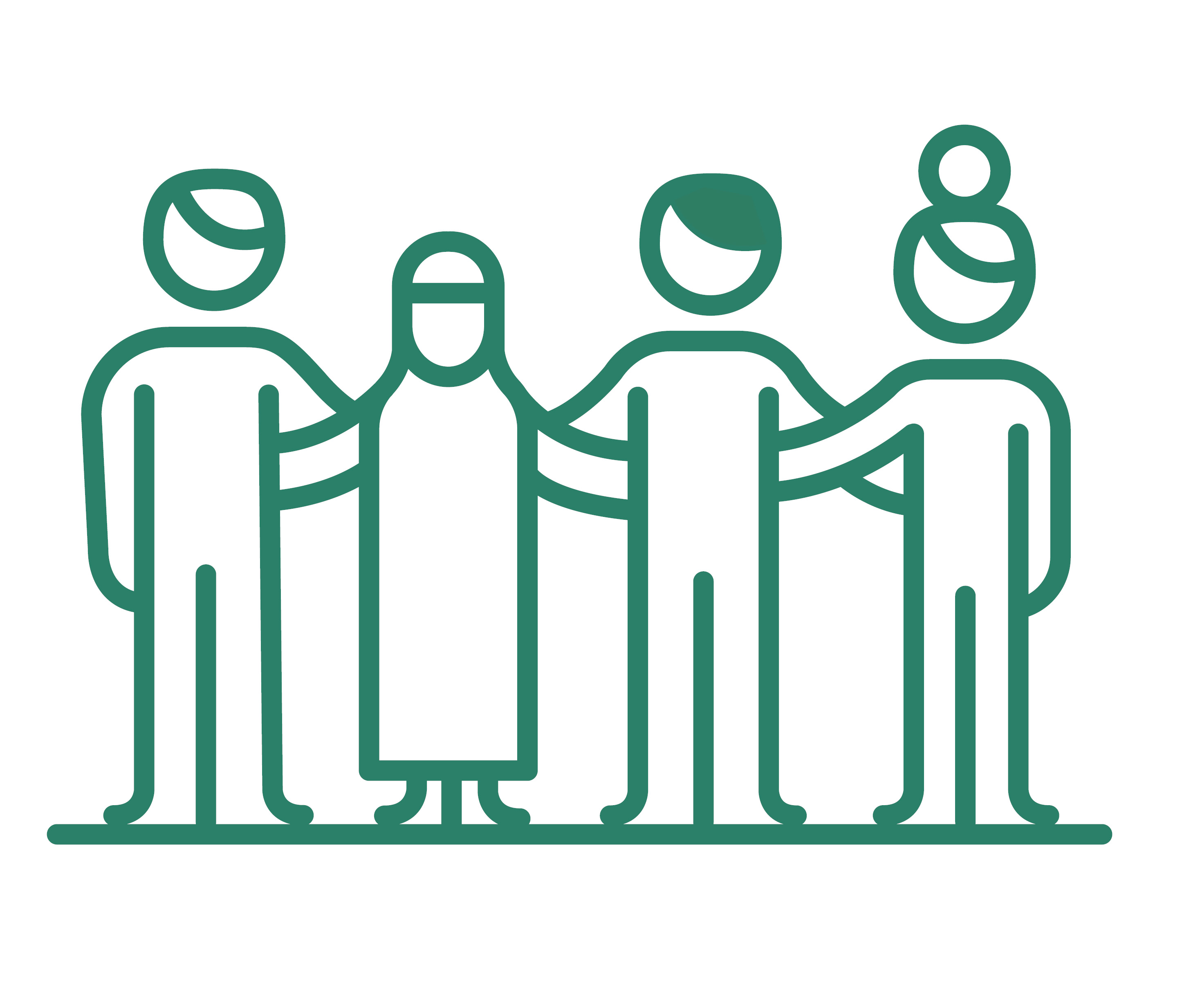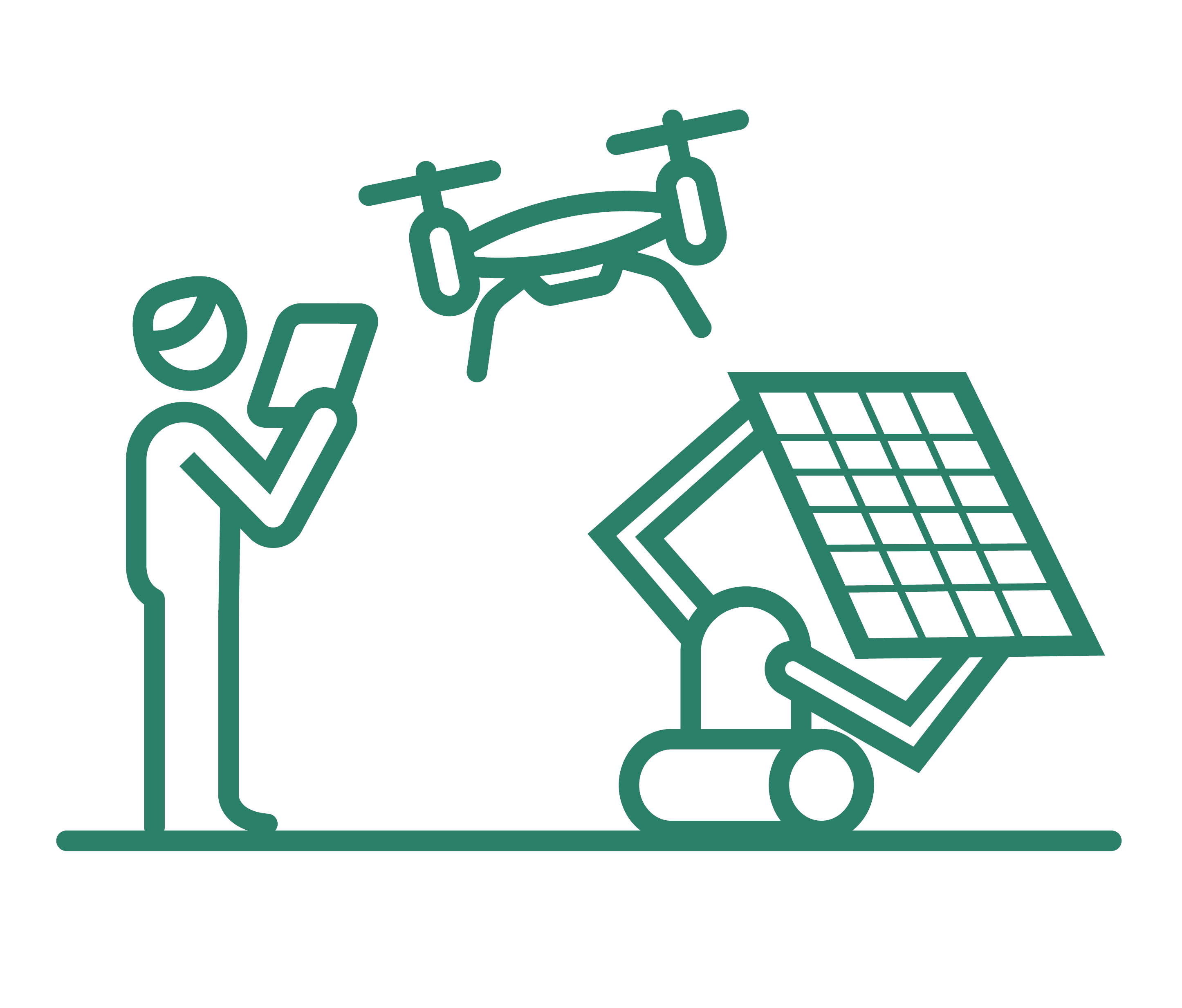Photos: iStock
Characteristics of the climate neutral society
The sections in this chapter outline the themes and elements that were repeated throughout the interview process.
In summary, a vision of a climate neutral Nordic society could be described as:
- A society in social and environmental balance.
- A healthier society.
- A society with more spare time.
- A society with strong, local communities.
- A society with a global mindset.
- A smarter society.
- An inclusive democracy with long-term policies.
- A new just and climate-friendly economy.
How many of these elements are also part of your vision of the climate neutral Nordic society?
Which of these elements are the most important in your vision of the climate neutral Nordic society?
To me, a climate neutral society in the Nordics would be a just and equitable society.
Interview in the project Nordic Stocktake and Visions – Pathways to climate neutrality
4.1. A society in social and environmental balance
Balance could be an important element in a vision of a climate neutral Nordic society. It could imply balance in many aspects of society, e.g. a better work-life balance (see also the section on “A society with more time”), a better balance between rich and poor, and a better balance between humans and nature.
In a climate neutral Nordic society in balance, we could leverage the synergies between environmental policies and social policies. We might be able to eradicate poverty. It could be a more equal society, where we – to ensure buy-in from all citizens – have emphasized equality and the just and fair transition as a core part of the pathway towards climate neutrality. Justice, fairness, and equality could be both a means and an end to a vision for the climate neutral Nordic region.
Balance could also imply a better global balance – between countries. It is also a question of security. Can we have a safe Nordic region in a world without global balance?

Climate neutrality is about balance. To not consume more than one Earth can sustain.
Interview in the project Nordic Stocktake and Visions – Pathways to climate neutrality
Besides social balance, a climate neutral Nordic society could also embrace environmental balance – beyond achieving a balance between greenhouse gas emissions and removals.
It could be a society in better balance with nature. A society where biodiversity thrives. And to be fully balanced, it would be a society where we stay within the planetary boundaries and have stopped overexploiting natural resources. It could be a society with significantly more nature and with easier access to nature for many Nordic citizens to allow them to spend more time in nature and feel more connected to the nature around them. In this vision, nature would also be more present in cities.
It’s not just about climate, it’s also about biodiversity and the other planetary boundaries. We need to think across these areas and find sustainable solutions that are both benefiting biodiversity and climate and other things as well.
Nadia Gullestrup Andersen, discussions at COP27 at the Nordic Pavilion
This is a society where we recognize that nature requires care in order to keep the balance. In this vision, nature is not something that just provides humanity with resources. It is something we respect, care for, and protect, and we understand the relationship between the parts in the entire ecosystem.
Maybe it is also a society where humans do not have full access to nature. There might be areas reserved solely for nature and biodiversity.
In this vision, nature-based solutions and holistic climate change and environmental policy were a central part of pathways towards climate neutrality. We recognized that the climate- and biodiversity crises needed to be addressed together and not separately. As such, it is also a vision of multifunctionality. Of how land-use can be used for multiple purposes simultaneously, e.g. combined community food production and biodiversity in peri-urban areas.
There is always something that interrupts the good intentions. Green education gives us long-term perspectives.
Interview in the project Nordic Stocktake and Visions – Pathways to climate neutrality
A balanced society is closely connected with who we are as humans. How we have been raised. And which values we were taught in school.
A Nordic vision of a climate neutral society could also be a vision of an educational system that supports the path towards climate neutrality. Green education could both be an important driver on the road towards climate neutrality and a core part of the climate neutral society.
In this vision, the educational system teaches people about the importance of nature and how to interact with it and how we need to rethink existing habits and invent new ones. It could also be an educational system with more time spent outside, classes dedicated to learning craft skills and on understanding materials and material use.
What does your vision of a climate neutral society look like?
- Would you like a future climate neutral society to be more equal?
- How important is nature and your relation to nature in your vision?
- In your opinion, what should be the role of the education system in the climate neutral society and the road towards it?
If we can escape the culture of increased consumption and economic growth, we will have more time and more focus on people’s wellbeing.
Interview in the project Nordic Stocktake and Visions – Pathways to climate neutrality
4.2. A healthier society
In the climate neutral society, people could have a higher quality of life and more well-being. This involves improved mental and physical health facilitated by the initiatives we took on the path towards climate neutrality. For example, it is not difficult to imagine a cleaner world with less pollution and better air quality because we have decarbonized the economy and the means of transportation.
In this vision, health is a major co-benefit of reaching climate neutrality. The different initiatives and policies implemented on the path towards climate neutrality had an explicit health dimension. Maybe we implemented policies to change the production and consumption of food, which again had the purpose of improving our health. Maybe we redesigned our economy to ensure more equality or equity between individuals and their incomes, which again enabled people to make more healthy choices and engage in more healthy lifestyles. Maybe more leisure time also resulted in people engaging a lot more in physical activities, supported by active mobility schemes that make people and citizens move around more

The only pathway to a safe landing is also a prosperous, an equitable and attractive landing. It’s a pathway that gives us a more modern civilization, which also has better equity, better security, better economic development and better health outcomes.
Johan Rockström, discussion at COP27 in the Nordic Pavilion
In terms of mental health, the people in the climate neutral society could experience less worry and anxiety. Partly due to having reached climate neutrality by itself – e.g. less worry about extreme climate events, about what is going to happen - but also partly due to the type of society, one could envision this to be – e.g. a society with less stress and more time to spend on friends and family. The vision of better mental health in a climate neutral society is thus closely connected with elements such as “more time” and “social and environmental balance” (see respective sections) and changes in our everyday life (see chapter “Everyday life in the climate neutral society”).
I think it's going to move back to what is actually making us happier as humans. I think we will completely reevaluate what in reality gives us quality of life.
Interview in the project Nordic Stocktake and Visions – Pathways to climate neutrality
Furthermore, in this society, we might no longer be burdened by bad conscience of our lifestyle choices (in one of the interviews stated as “subtle self-hatred for your lifestyle and consumption”) since we live in a society where sustainable choices are the default. In this future, being sustainable is no longer something the consumer needs to worry about. It might be a society where our core values have changed profoundly. Values such as individualism, profit, and productivity might have been replaced by a sense of community, empathy, gratefulness, and appreciation.
What does your visio n of a climate neutral society look like?
- Is improved health and well-being an important part of your vision of the climate neutral society?
- How would you measure your happiness in a climate neutral society?
Photo: Tine Uffelmann, Visit Nordsjælland
The best thing about the climate neutral society? It’s that you have more time.
Interview in the project Nordic Stocktake and Visions – Pathways to climate neutrality
4.3. A society with more spare time
“More spare time” could be an important element in a Nordic vision of the climate neutral society. This involves having more time to spend with friends and family and having more time to spend on experiences and culture – or whatever it is that constitutes a valuable use of time for the individual.
A climate neutral society with more time is appealing as a response to today’s often stressful society. For some, the vision of a climate neutral society could be a vision of a society where the tempo has been lowered. A society where there is less stress and pressure on the individual. As such, the notion of “more spare time” is closely linked to better mental and physical health.
The notion of time is also linked to consumption patterns and work. In a vision of the climate neutral society where we consume less, an individual might also need to work less and thus there is more time to spend outside of work. In this society, technology could also be enabler by allowing us to work smarter and more efficiently.
Time is also important for our transportation habits. One could imagine a climate neutral society where we have more time and thus less need for “fast” modes of transportation. Maybe blimps and electric ferries will replace flights in the international transport system in a climate neutral future? It could also imply a change towards more shared forms of transportation (see section on Transportation).
Realizing a climate neutral society with “more spare time” is not something that happens naturally in the process towards climate neutrality. The transformation to the vision of a climate neutral society with more time would entail a reevaluation of our core values: from consumption and earnings as a marker of success to success measured in terms of what we spend our time on and who we spend it with. It could be a future where we spend much more time on our children and our fellow human beings, resulting in a culture of empathy and compassion.
Furthermore, in the Nordic countries and beyond, we might have to solve the demographic issue of falling fertility rates combined with a longer lifespan. When the share of elderly in the population increases relatively to the working age population, this puts pressure on the younger in the population to work harder and more efficiently – unless we decide to do things markedly different in terms of consumption and production patterns.

What does your vision of a climate neutral society look like?
- Would you like to have more spare time in a climate neutral society?
- What would you spend the time on?
- What would you be willing to give up to have more spare time?
Neighbourhoods have now become more of a central part of people’s lives.
Interview in the project Nordic Stocktake and Visions – Pathways to climate neutrality
4.4. A society with strong, local communities
An important element of a Nordic vision of a climate neutral society could be stronger, local communities. This could be something that happens naturally as part of the path towards climate neutrality as we get together to solve the crisis – or it could be a change furthered by potential developments in other sectors. Developments such as more localized food production (see section “Food”), markedly different consumption patterns with more sharing of products (see “Consumption”), less time spent at work and more time to invest in your local community (see “A society with more spare time”), and less travelling (see “Transportation”).
In this vision, the local community is where people spend most of their time and their resources. People help each other out more and look after their neighbors and their children. It could be a society with local environments more conducive to human health and well-being as more time and effort is invested into these environments.
Products and food could be produced more locally as we experience homeshoring of previously global supply chains. We might see small scale energy production facilities in the local area tailored to the local community.
It is likely not a society where everything is produced locally. There will likely still be global supply chains and global trade in certain areas of the economy but with the circular economy, more expensive transport and more local food production, the need and desire for global supply chains will be lessened.

Local communities will flourish in the climate neutral society.
Interview in the project Nordic Stocktake and Visions – Pathways to climate neutrality
In a Nordic vision of the climate neutral society, strong local communities could enable a larger degree of sharing, e.g. in terms of collective housing, producing food together, sharing means of transportation, and having access to for example communal tools and appliances.
In this vision, luxury is primarily something that is shared between people. One example could be access to good public swimming pools versus having a private swimming pool.
Communities could also be important bottom-up enablers for reaching climate neutrality, illustrating that different ways of living are possible and desirable.
What does your vision of a climate neutral society look like?
- Would you like to spend more time and effort in your local community?
- How important is your local community for you in your vision of the climate neutral society?
Photo: Andreas Omvik / norden.org
It's so important in my view that we all become better at thinking as world citizens.
Interview in the project Nordic Stocktake and Visions – Pathways to climate neutrality
4.5. A society with a global mindset
The previous section described a vision of the Nordic climate neutral society characterized by more emphasis on the local area and local communities. In a positive vision of the climate neutral Nordic society, this does not imply that the Nordic countries isolate themselves from the rest of the world. Instead, the climate neutral Nordic society could be characterized by being locally rooted but with a global mindset.
Global collaboration has not disappeared in the climate neutral society. But it might be different and set up to ensure a more equal distribution of resources globally.
In this vision, well-being in one region is tied to well-being in another region. The Nordic region would be characterized by global solidarity, increased integration and collaboration and open and honest communication with other parts of the world.
It might be a society where we see more collective, global effort towards reducing emissions and adapting to a changing climate, and more global volunteering in places strongly impacted by climate change.
In this vision, the world will also be a safer place. Lack of global collaboration might lead to migration, wars, and conflicts with both direct and indirect consequences for the Nordic region.

We've also made sure to collaborate a lot more with regions of the world that are less fortunate, that are bearing a lot more of the consequences of climate change than we are.
Interview in the project Nordic Stocktake and Visions – Pathways to climate neutrality
What does your vision of a climate neutral society look like?
- What role does the rest of the world (not your country/local area) play in your vision of the climate neutral society?
- What do you associate with “global solidarity”?
Behavioral changes will be less important than technological changes.
Interview in the project Nordic Stocktake and Visions – Pathways to climate neutrality
4.6. A smarter society
Technology and technological advancements will play a large role in the climate neutral society and the path towards it. The question is – how large?
One could envision a society that is a lot more digital and “smarter” than our current one. Smarter in terms of technological breakthroughs in how we optimize our use of energy, how we transport ourselves, how we produce food, etc.
It could be a future where advancements in artificial intelligence liberate resources and time – with large impacts on e.g. working life. It could be that technology, AI and automation results in people will losing their jobs – but allows them to find purpose and meaning in other activities, e.g. volunteering and helping out in their local communities (see section “A society with strong, local communities”). Maybe a lot of jobs will instead be created in circular industries.
The “smarter” climate neutral society could provide people with some of things we might have had to give up to achieve climate neutrality. Maybe digital solutions can provide experiences in a future where travel has gotten more expensive.
The vision of the climate neutral society could also be of a future where technological advancements in e.g. carbon capture and storage have helped us reach climate neutrality but where we have also significantly changed our behaviour in parallel.

The tech industry will have a certain part to play. But it will be a smaller role than we expect. The changes in climate neutral society will be more at the societal level rather than the technical level.
Interview in the project Nordic Stocktake and Visions – Pathways to climate neutrality
What does your vision of a climate neutral society look like?
How large a role does technology and digital solutions play in your vision of the climate neutral society? And in which areas?
Quite often we create this false dichotomy. Should you be talking about 2030 or should you be talking about 2050 or 2040? It's the same thing.
Interview in the project Nordic Stocktake and Visions – Pathways to climate neutrality
4.7. An inclusive democracy with long-term policies
A natural part of forming a vision of a climate neutral society is thinking about how decisions are made and by whom.
One could envision a future where politicians and decision-makers are more focused on long-term planning. In this vision, short-term political initiatives are aligned with and support long-term societal goals. This is especially relevant for natural resource and land-use management.
Visions are an important part of politics in this scenario. They set the long-term targets and describe the reasons for trying to reach them. Politicians ask themselves and their voters: What is the dream society and how do we get there?

Need to focus on back-casting, where you focus on the vision, you focus on the destination and then you work your way back. What needs to be true today for this to happen in 2040 or 2050?
Interview in the project Nordic Stocktake and Visions – Pathways to climate neutrality
It could entail a brush-up of the political system, specifically with regards to breaking down silos and ensuring knowledge sharing and transparency across government branches – and from government to businesses and civil society. It could also entail a more participatory form of democracy, with more decision-making power to local, direct democratic organizations (e.g. citizen assemblies or similar). This furthermore could ensure that everyone is involved in the transition, could address political polarization, and could be a central part in ensuring a just and fair transition.
In this vision, climate policy is also closely linked to most other policy areas. Politics are thus concerned with harvesting and promoting synergies between policy areas and with a holistic view on positive/negative consequences of political decisions, e.g. in a planetary boundaries framework.
Finally, a vision of a climate neutral society could also be about more transparency and disclosure in politics. It could be a society with more clarity on the intentions of political actors; better disclosure on lobbying activities; and better sharing of information between all levels of society.
What does your vision of a climate neutral society look like?
- Does the political system function the same way as now or has it been changed?
- Would you like to have the chance to be more involved in political matters – local/regional/national?
We need to change our economic system and laws to not be profit-oriented but centered around well-being and sustainability.
Maija Kuivalainen, discussions at COP27 in the Nordic Pavilion
4.8. A new just and climate-friendly economy
New economic models, especially in relation to the climate crisis, is a topic that has received a lot of attention in recent years, notably lately also in the EU
Changes could entail everything from consistent taxation on greenhouse gas emissions and pollution to a radically different economic system. It would likely be an economy with decoupling of growth and emissions – and maybe it is an economic system where monetary growth is no longer the goal. Instead, it could be a well-being economy with the individual’s well-being valued higher than monetary gains.
It could be an economic system where the prices of goods and services fully reflect the negative, environmental externalities of producing the good/service. In this vision, ecosystem services are also monetized, rewarding landowners who create and maintain natural carbon sinks, biodiversity areas or similar. This could create a new source of income for a lot of people.
It could also be an economic system that encourages redistribution and thus ensures a just and fair transition and a just and fair climate neutral society.

“The transition is not just from one energy system to another, it's also a transition from one economic system to another.
Interview in the project Nordic Stocktake and Visions – Pathways to climate neutrality
What does your vision of a climate neutral society look like?
- What does the economic system look like in your vision of the climate neutral society?
- What is the biggest change from the economic system of today?